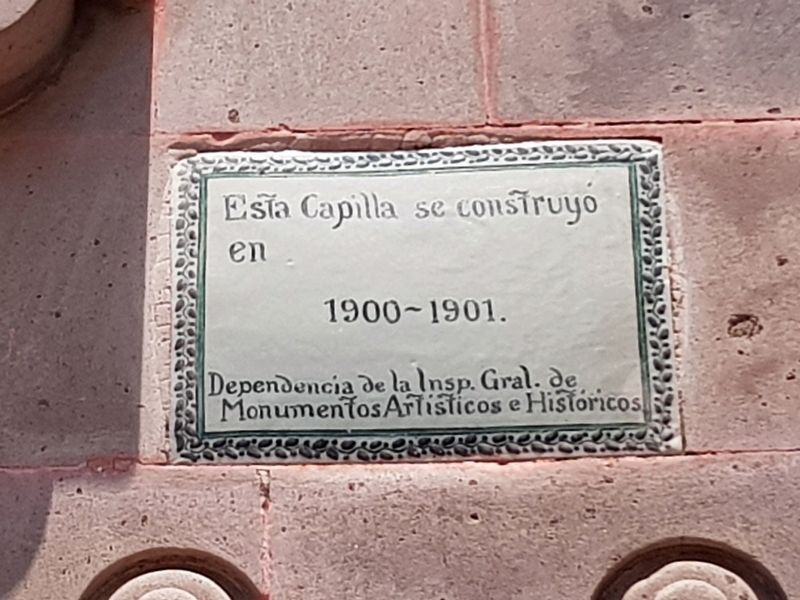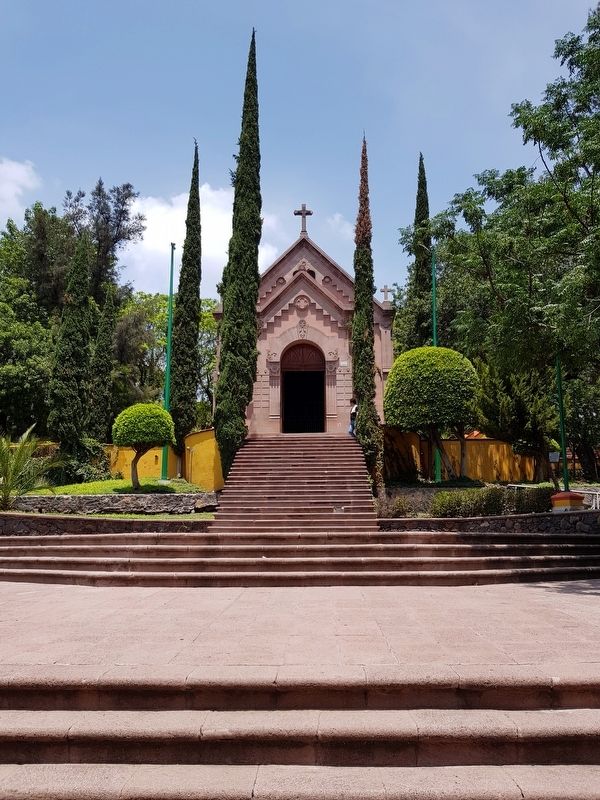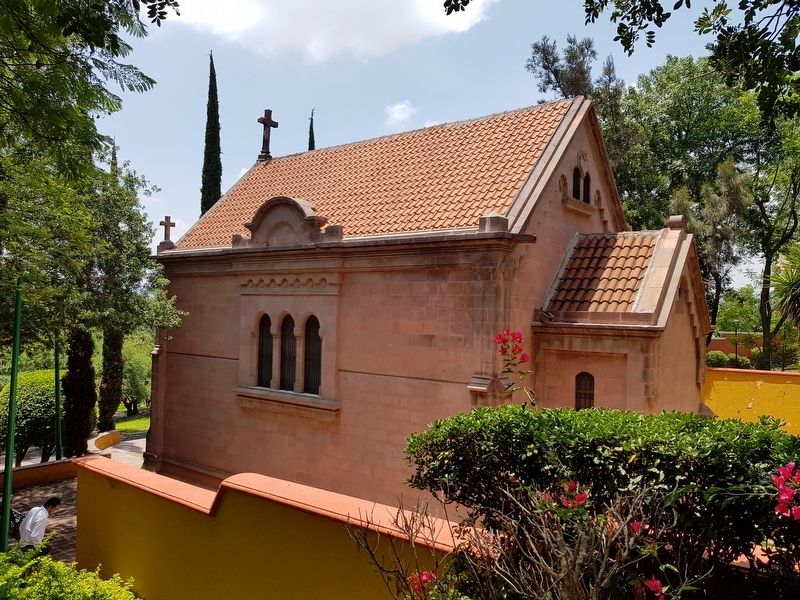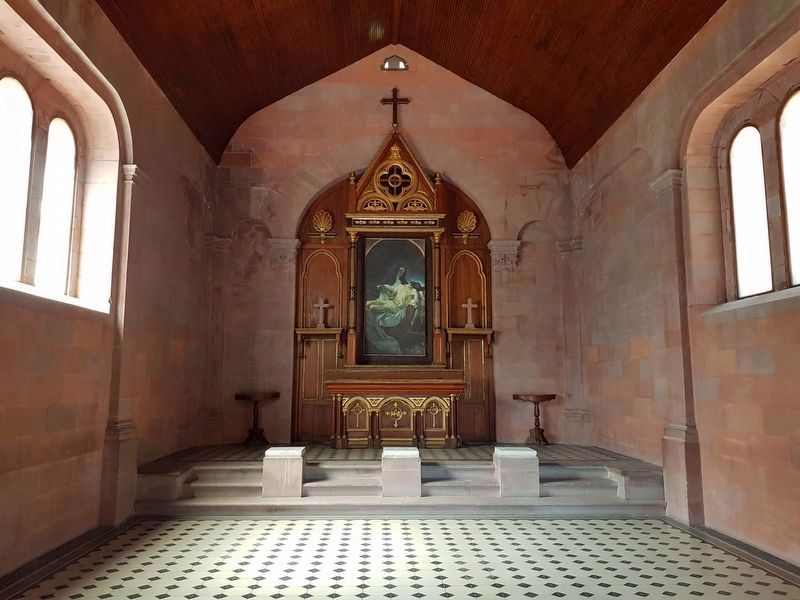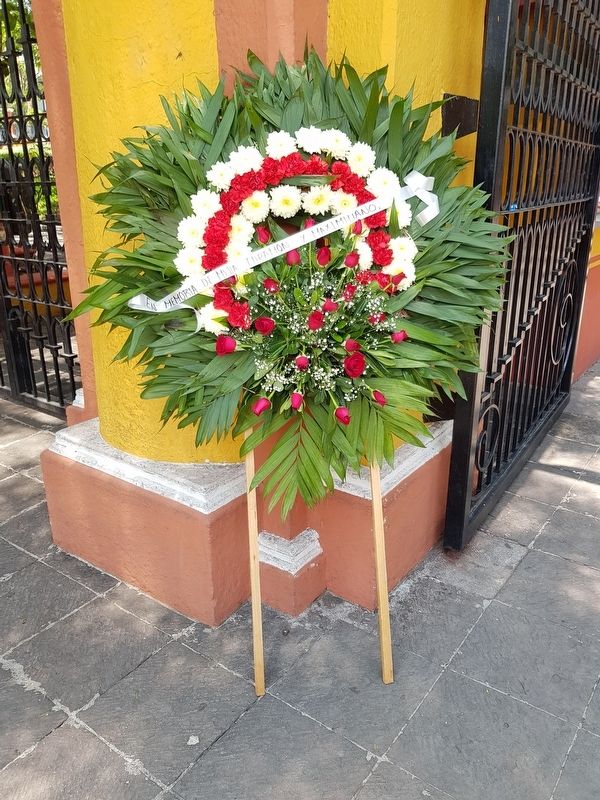Santiago de Querétaro in Querétaro, Mexico — The Central Highlands (North America)
The Chapel of La Piedad
Esta Capilla se construyó en 1900-1901.
Dependencia de la Insp. Gral. De Monumentos Artisticos e Históricos
English translation:
Dependency of the Inspector General of Artistic and Historic Monuments
Erected by Dependencia de la Inspección General de Monumentos Artísticos e Históricos.
Topics. This memorial is listed in these topic lists: Churches & Religion • Man-Made Features • Wars, Non-US.
Location. 20° 35.598′ N, 100° 24.57′ W. Marker is in Santiago de Querétaro, Querétaro. Memorial can be reached from Calle Cerro de las Campanas just west of Calle Justo Sierra, on the left when traveling north. Touch for map. Marker is in this post office area: Santiago de Querétaro QUE 76010, Mexico. Touch for directions.
Other nearby markers. At least 8 other markers are within walking distance of this marker. Hill of the Bells (a few steps from this marker); a different marker also named Hill of the Bells (about 90 meters away, measured in a direct line); General Mariano Escobedo (about 120 meters away); Founding of the Autonomous University of Querétaro (about 210 meters away); Site of the Surrender of Maximilian (approx. 0.3 kilometers away); The Children Heroes of the Battle of Chapultepec (approx. half a kilometer away); The Parish of Cristo Rey (approx. 0.7 kilometers away); Félix Nabor Osores de Sotomayor García (approx. 0.9 kilometers away). Touch for a list and map of all markers in Santiago de Querétaro.
Also see . . . Emperor Maximilian Memorial Chapel. The hill on what was formerly the outskirts of Querétaro was the site of the end of the Second Mexican Empire. After being intercepted by the Republican generals on May 15, 1867, the emperor, who had been besieged in Querétaro since March, surrendered near the hill to General Mariano Escobedo. He was jailed, along with his two generals: Miramón, who had been the president of Mexico for most of 1859 and 1860, and Mejía, a Querétaro-born cavalry general. After a court-martial in Querétaro in which all three were sentenced to death, the sentence was carried out atop the hill on June 19, 1867, when Maximilian, Miramón and Mejía were executed. The site was initially marked with piles of stone topped by crosses
made of sticks; later, wooden crosses were placed on the site, which are now housed in the Cerro de las Campanas Museum. In 1886, the first monument was constructed on the site: three stone columns engraved with the names of the deceased, surrounded by iron bars supported by wooden columns, commissioned by Governor Rafael Olvera.
In 1900, after diplomatic relations between Mexico and Austria-Hungary resumed, the chapel was constructed on the site. Commissioned by Emperor Franz Joseph I in memory of his late brother and designed by architect Maximiliano Mitzel, the chapel was dedicated on April 10, 1901. The altar and altarpiece were made at the Querétaro School of Arts and Crafts, and the cross on the altar is taken from the SMS Novara, the ship on which Maximilian and his wife Charlotte of Belgium arrived in Mexico and which transported his remains back to Austria. He was laid to rest in the Imperial Crypt. Adapted from Wikipedia (Submitted on July 9, 2018, by J. Makali Bruton of Accra, Ghana.)
Credits. This page was last revised on April 11, 2019. It was originally submitted on July 9, 2018, by J. Makali Bruton of Accra, Ghana. This page has been viewed 142 times since then and 11 times this year. Photos: 1, 2, 3. submitted on July 9, 2018, by J. Makali Bruton of Accra, Ghana. 4. submitted on April 11, 2019, by J. Makali Bruton of Accra, Ghana. 5. submitted on July 9, 2018, by J. Makali Bruton of Accra, Ghana.
